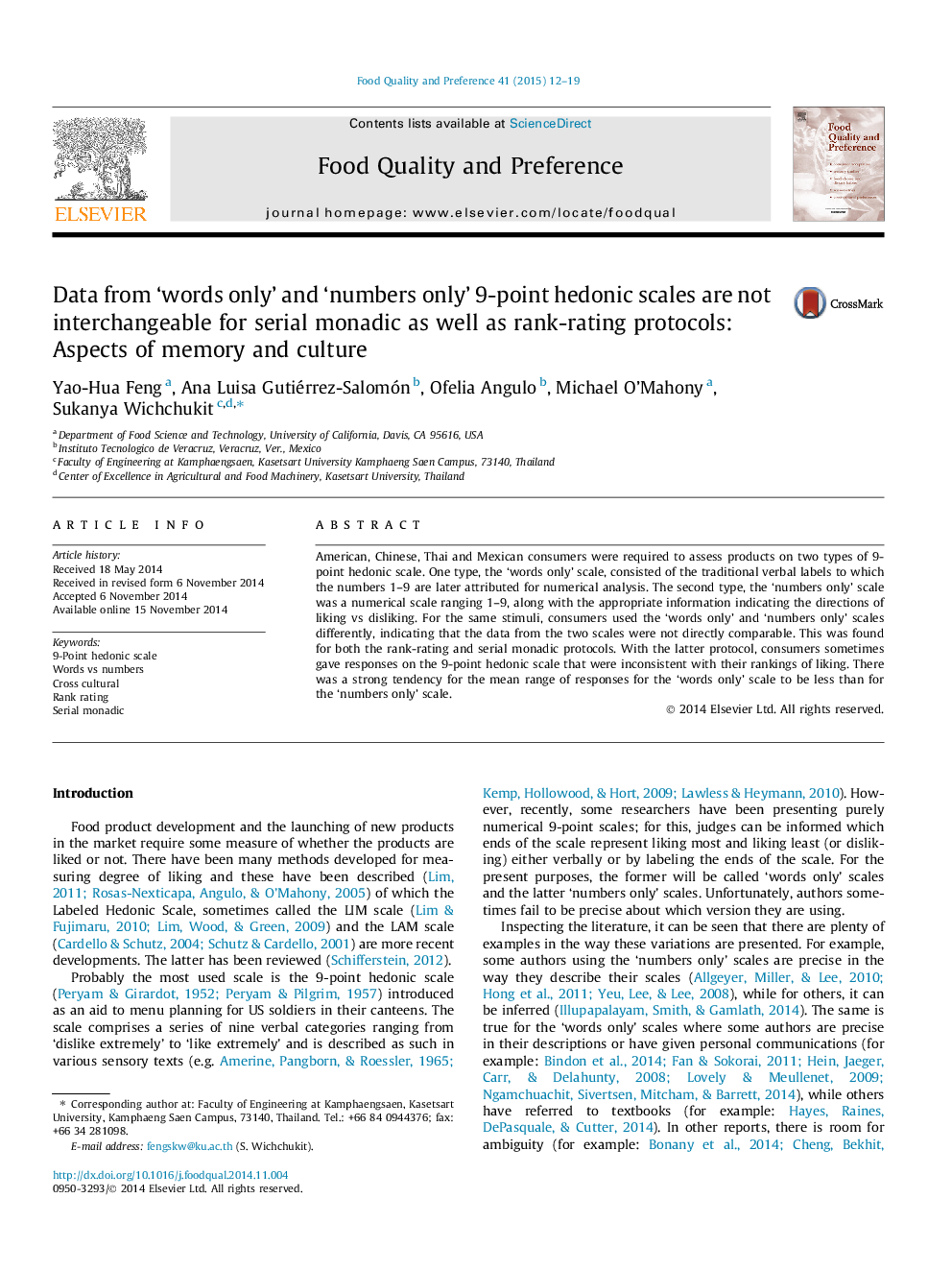| Article ID | Journal | Published Year | Pages | File Type |
|---|---|---|---|---|
| 4317006 | Food Quality and Preference | 2015 | 8 Pages |
•Consumers from USA, PR China, Thailand and Mexico were tested.•They used two versions, ‘words only’ and ‘numbers only’, of the 9-point hedonic scale.•For the majority of consumers, data from the two types of scale were different and so cannot be considered as interchangeable.•This was true for both rank-rating and serial monadic protocols.•Errors caused by forgetting occurred with the serial monadic protocol.
American, Chinese, Thai and Mexican consumers were required to assess products on two types of 9-point hedonic scale. One type, the ‘words only’ scale, consisted of the traditional verbal labels to which the numbers 1–9 are later attributed for numerical analysis. The second type, the ‘numbers only’ scale was a numerical scale ranging 1–9, along with the appropriate information indicating the directions of liking vs disliking. For the same stimuli, consumers used the ‘words only’ and ‘numbers only’ scales differently, indicating that the data from the two scales were not directly comparable. This was found for both the rank-rating and serial monadic protocols. With the latter protocol, consumers sometimes gave responses on the 9-point hedonic scale that were inconsistent with their rankings of liking. There was a strong tendency for the mean range of responses for the ‘words only’ scale to be less than for the ‘numbers only’ scale.
